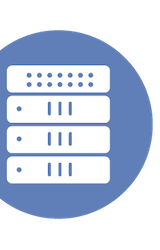Keith Parsons offers a glimpse into Arista’s dedication to a culture of quality through the insights of Ken Duda in his recent LinkedIn Pulse article. Duda’s approach underlines the importance of meticulous engineering and customer-centric support as the cornerstone of Arista’s business ethos. The piece provides a refreshing perspective on how a relentless focus on quality can drive a company’s success and distinguish it within the competitive tech industry.
Ubiquiti Enters the Enterprise Space
Ubiquiti, traditionally known for their impact on the prosumer market, is making a significant leap into the enterprise space, as detailed by Kevin Franzen. This strategic move signals the company’s commitment to expanding its reach and addressing the sophisticated networking needs of larger businesses. Ubiquiti’s foray into the enterprise realm offers potential for greater competition and innovation in the networking industry, challenging existing market leaders with their disruptive technology and pricing model.
Enhancing Data Center Security With Zerto’s Cyber Resilience Vault
Zerto is elevating data center security with its pioneering Cyber Resilience Vault, as outlined in Lars Trøen’s LinkedIn article. This safeguarding solution is designed to mitigate the risk of data loss and downtime through robust disaster recovery and continuous data protection capabilities. Emphasizing the importance of cyber resilience in today’s landscape, the vault stands as a testament to Zerto’s commitment to developing cutting-edge security measures for protecting critical infrastructures against emerging threats.
Aryaka Presents Unified SASE as a Service at Security Field Day 11
At Security Field Day 11, Aryaka presented their Unified SASE as a Service, showcasing a fully integrated solution designed to streamline network security and performance for enterprises. This novel service incorporates advanced security features into Aryaka’s already robust global SD-WAN service, promising a more cohesive and scalable approach to the modern enterprise’s connectivity and security needs. Aryaka’s presentation highlighted how their SASE service is set to simplify the management of network security, offering a single, unified platform to protect against the evolving landscape of cyber threats. Read more in this LinkedIn Pulse article by Skye Fugate.
Unveiling the Power of Digital Twins
The concept of digital twins is revolutionizing how we interact with and manage complex systems, demonstrated in Greg Grimes’ article on the subject following the Forward Networks presentation Networking Field Day. Read more in this LinkedIn Pulse article.
Next-Generation AI With VAST Data: Beyond Storage and Compute
This LinkedIn article by Gina Rosenthal discusses the VAST Data solution for AI data presented at AI Field Day. VAST Data pioneers AI and deep learning infrastructure with its integrated VAST Data Platform, as presented in partnership with NVIDIA and Supermicro that further solidify VAST’s role in streamlining AI adoption and digital transformation.
Forward Networks Now With More AI
Amidst the ubiquitous influence of artificial intelligence in our daily lives, Forward Networks stood out to Josh Warcop by integrating AI with a robust data-first approach, as showcased at Networking Field Day. Their creation of a digital twin for network infrastructure ensures precise data, allowing AI to effectively communicate with it, bypassing the challenges of manual data modeling. Forward Networks’ Network Query Engine, equipped with an AI Assistant, generates human-readable queries, bridging the gap between complex data systems and operator expertise and fostering trust in AI’s capabilities within network management.
Let Someone Else Install Your Campus Network
As Aaron Conaway posted, Nile showcased their comprehensive campus network solutions at Networking Field Day, emphasizing their end-to-end service that extends beyond hardware delivery to include detailed network planning and on-site evaluations. Their approach ensures not only installation but also up-to-date firmware and secure configurations managed via a cloud-based system, challenging the traditional “install now, secure later” methodology. Nile further distinguishes itself with ongoing management, monitoring, and proactive problem and replacement services, offering an innovative model for organizations lacking significant capital expenditure budgets.
Nile – Network as a Service – Considerations for Adoption
Attending Network Field Day gave Ryan Lambert a first-hand look at Nile’s innovative Network as a Service (NaaS) offering, a service model that manages and maintains a customer’s network infrastructure. Nile stands out by not only managing and monitoring networking equipment but also engaging with partners for on-site surveys to ensure top-notch performance, guaranteeing service levels for the hassle-free operation of customer networks. However, it’s important for customers to understand the shared responsibility in such managed solutions, particularly regarding the physical environment and specific requirements, ensuring Nile’s service guarantee aligns with their needs.
No Inventory, No Proper Management
At Networking Field Day 34, Forward Networks, Inc. showcased the substantial advantages of implementing a digital twin for network management. The digital twin provides a dynamic and thorough inventory by constantly analyzing the network to reflect its current state, automatically updating documentation, and enhancing compliance and automation efforts. Aaron Conaway emphasized the crucial need for up-to-date network visibility, asserting that reliable network management is impossible without a comprehensive and current understanding of one’s network infrastructure.
Defeating Data Gravity? – Hammerspace
According to Keith Townsend, Hammerspace presented a compelling argument for a shift in overcoming data gravity by moving data closer to accelerated computing resources at AI Field Day. Their solution, a parallel file system, acts as a bridge between dispersed data sources, offering a unified metadata view that streamlines data preparation for AI tasks. While Hammerspace’s technology appears to enhance user experience, it also requires strategic GPU placement and considerations around data governance and movement across geopolitical boundaries.
Forward Networks – The Tale of an Aptly Named Company
In Ryan Lambert’s LinkedIn Pulse article he delves into the capabilities of Forward Networks, a company he says lives up to its name. The company creates a Digital Twin of network data, encompassing router configurations, route tables, and firewall policies. Lambert emphasizes the practicality of this approach, enabling users to gain insights into network behavior, potential vulnerabilities, and operational breakdowns.
Insights From the AI Field Day: A Futurum Group Overview
In this LinkedIn Pulse article, Paul Nashawaty of The Futurum Group summarizes all of the AI Field Day presentations, highlighting VMware’s deep dive into Private AI in collaboration with industry giants like NVIDIA and IBM, and Intel’s focus on deploying AI inference models with Xeon CPUs across diverse environments. Next-generation AI-infused storage solutions from Solidigm and SuperMicro underscored the critical role of optimized storage in AI, while Vast Data focused on addressing the growing data demands of AI and HPC workloads. Google Cloud’s session on AI platforms and infrastructures showcased innovative approaches with Kubernetes at the core, paving the way for accessible and powerful AI development and deployment.
“AI Assist” Is Better Than “AI Do It for Me”
John Herbert feels cautious towards AI, particularly when entrusting it with network control, advocating for human oversight to validate AI-generated solutions. But he appreciates Forward Networks’ AI Assist feature for creating natural language queries that help users engage with the company’s Network Query Engine (NQE), while retaining the option for manual evaluation and tweaking. Furthermore, Herbert finds value in the Summary Assist tool, which provides natural language explanations of NQE queries, enhancing user understanding and trust in the AI’s output.
From Server Farm to Table: How Nature Fresh Uses AI and CPUs to Improve Crop Yields
At AI Field Day 4, Keith Bradley from Nature Fresh Farms highlighted the practical application of AI in agriculture, revealing how the company utilizes AI models and data from IoT devices to boost crop yields significantly. As Jim Davis writes, Nature Fresh Farms’ unique approach relies heavily on edge computing with Intel Xeon CPUs for AI inferencing, debunking common misconceptions that AI always requires cloud connectivity or GPU resources. Bradley’s presentation emphasized the critical importance of IT system reliability in the agricultural sector, where even brief periods of downtime can result in substantial losses.
Qlik Presents About AI on AIFD4
At AI Field Day, Qlik unveiled their comprehensive AI strategy, focusing on enabling customers to tackle the complexity and scale of AI integration into their operations with solutions like predictive analytics, AutoML, and their 170K-strong model portfolio. With initiatives like Qlik Staige, the company facilitates the use of AI for those new to the field, using established algorithms and bringing structured and unstructured data together for added value. Read more about the Qlik presentation in this LinkedIn Pulse article by Gina Rosenthal!
VAST Data Operationalizing AI
At AI Field Day 4, Keith Townsend engaged with VAST Data’s John Mao and Neeloy Bhattacharyya to discuss the company’s innovative architecture that separates the persistent data layer from stateless logic, optimizing access patterns and improving data preparation efficiency for AI applications. Gina Rosenthal highlights their global namespace approach and the unique “VAST DataBase” system, they are streamlining data availability and scalability across the pipeline.
Google Cloud at Intel Day @ #AIFD4
At AI Field Day, Google Cloud’s Brandon Royal presented insights into AI platforms and infrastructure, emphasizing the shift from the internet to mobile and AI. He introduced Gemini, Google’s multi-modal model, and unveiled Gemma, a family of lightweight models. Royal discussed safety measures and highlighted GKE’s role in AI, covering CPUs, GPUs, and TPUs. A demo showcased Gemma on GKE supporting 8K tokens. Ameer Abbas, Senior Product Manager at Google Cloud, focused on Developer and Operational Productivity with Duet AI, demonstrating code development and transformation capabilities for enterprise builders and developers. Read more in this LinkedIn Pulse article by Gina Rosenthal.
VMware by Broadcom Presents Private AI With Intel at AI Field Day 4
During AI Field Day 4, VMware stepped up to showcase how Intel AMX CPUs can be leveraged for Large Language Models (LLM) on vSphere, presenting a CPU-centric approach to AI tasks commonly handled by GPUs. As discussed by Gina Rosenthal, Earl Ruby of Broadcom (VCF) demonstrated the potential of Intel’s AMX technology in both older Ice Lake and newer Sapphire Rapids systems, achieving model fine-tuning and inference without the use of GPUs. This approach champions using CPUs for AI when feasible, reserving GPU use for scenarios demanding lower latency, and highlights the compatibility requirements for effectively implementing AI with Intel’s hardware in a vSphere environment.







